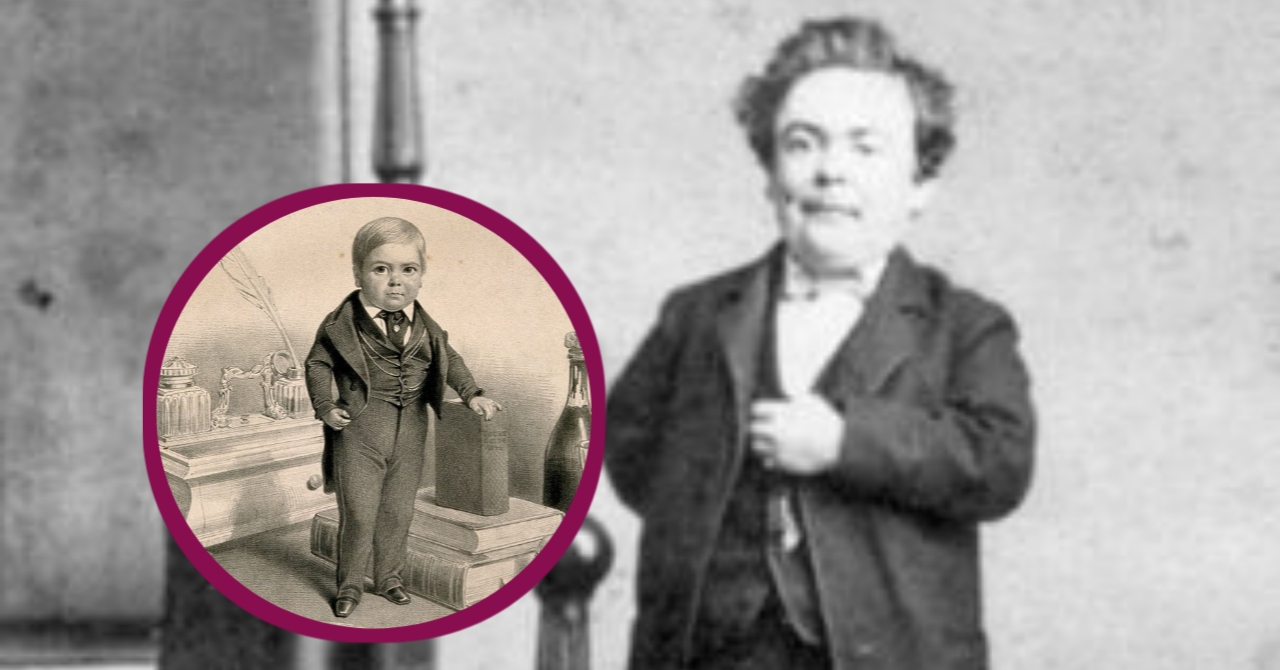The Legendary Tale of Tom Thumb: Origins, Adaptations, and Cultural Impact
The story of Tom Thumb is one of the most beloved and enduring fairy tales in history. Despite his tiny stature, Tom Thumb has loomed large in the world of folklore, literature, and popular culture. His adventures, which have been retold in various forms, have entertained generations of readers and audiences across the globe. In this article, we will explore the origins of Tom Thumb, his journey through folklore and literature, as well as his lasting influence on modern storytelling. From the ancient legends that inspired him to the modern adaptations that keep his story alive, this article will provide a comprehensive exploration of the character and his significance.
The Origins of Tom Thumb in English Folklore
Tom Thumb’s story can be traced back to English folklore, where the character is often depicted as a tiny boy, no larger than a man’s thumb, born to a peasant family. His diminutive size often leads to humorous situations and predicaments, but his wit, bravery, and determination make him a beloved hero.
The earliest printed version of Tom Thumb dates back to 1621, when the tale was first published in a chapbook, a small booklet containing popular stories, ballads, and folklore. The chapbook version of Tom Thumb’s adventures became widely popular in England and was reprinted multiple times over the centuries. While the exact origins of the story are difficult to pinpoint, it is believed that the tale of Tom Thumb may have roots in older, oral traditions that predate its publication.
In the original tale, Tom Thumb’s mother, longing for a child, wishes that she could have a son, even if he were no bigger than her thumb. Her wish is granted, and Tom is born. Despite his small size, Tom quickly proves himself to be clever, resourceful, and brave, often using his wit to outsmart larger and stronger opponents. Throughout the various versions of the story, Tom embarks on a series of adventures, encountering giants, magical creatures, and royalty along the way.
Tom Thumb in Literature: From Chapbooks to Fairy Tales
Following its initial publication in the 17th century, the tale of Tom Thumb continued to be a popular subject in English literature. Chapbooks featuring Tom Thumb’s adventures were widely circulated and became a staple of popular reading material for children and adults alike. These early versions of the story were often accompanied by woodcut illustrations, which added to the tale’s appeal.
As the fairy tale genre developed in the 18th and 19th centuries, Tom Thumb was included in numerous anthologies of folk tales and nursery rhymes. Notably, the character appeared in Joseph Jacobs’ “English Fairy Tales” (1890), a collection that helped to solidify the story’s place in the canon of British folklore. Jacobs’ version of the tale, like many others, emphasized Tom’s cleverness and his ability to overcome seemingly insurmountable challenges despite his small size.
Tom Thumb’s popularity was not limited to England. Over time, his story was adapted and translated into numerous languages, spreading across Europe and beyond. In many cultures, Tom Thumb became a symbol of the triumph of the underdog, representing the idea that intelligence and courage can overcome physical limitations.
Tom Thumb and the Rise of the “Tiny Hero” Archetype
The character of Tom Thumb is an early example of the “tiny hero” archetype, which has become a common motif in literature and storytelling. The idea of a small or seemingly weak character who overcomes great obstacles through ingenuity and bravery resonates with audiences, particularly in stories aimed at children.
In many ways, Tom Thumb paved the way for other iconic tiny heroes, such as Thumbelina, The Borrowers, and Stuart Little. These characters, like Tom, are often faced with challenges that seem impossible to overcome due to their size, but they succeed through their cleverness and resourcefulness. The appeal of the tiny hero lies in the message that size or strength is not the only measure of a person’s worth, and that even the smallest individuals can achieve great things.
The tiny hero archetype continues to be a popular trope in modern literature, film, and television. Characters like Ant-Man from Marvel Comics or the Minions from the “Despicable Me” franchise are modern iterations of this enduring theme, proving that the story of the small but mighty hero still resonates with contemporary audiences.
P.T. Barnum and General Tom Thumb: The Birth of a Legend
In the 19th century, the story of Tom Thumb took on a new dimension with the rise of Charles Stratton, better known by his stage name General Tom Thumb. Stratton, born in 1838, was a dwarf who stood just over three feet tall as an adult. He was discovered by famed showman P.T. Barnum, who promoted him as the living embodiment of the legendary Tom Thumb.
Under Barnum’s management, General Tom Thumb became one of the most famous entertainers of his time. He performed across the United States and Europe, often appearing in lavish costumes and reenacting scenes from the fairy tale. Stratton’s performances drew large crowds, and he became a household name, further cementing the legacy of the Tom Thumb character in popular culture.
While General Tom Thumb’s fame was largely the result of Barnum’s marketing genius, it also speaks to the enduring appeal of the tiny hero archetype. Stratton’s performances tapped into the public’s fascination with characters like Tom Thumb, who defied expectations and achieved greatness despite their small size. Today, General Tom Thumb is remembered as one of the most successful entertainers of the 19th century, and his legacy is intertwined with the fairy tale character that inspired his stage name.
Tom Thumb in Popular Culture: Film, Television, and Beyond
The story of Tom Thumb has been adapted into numerous forms of entertainment, including films, television shows, and animated series. One of the earliest film adaptations of the tale was the 1958 musical fantasy film “Tom Thumb,” directed by George Pal. The film featured a mix of live-action and stop-motion animation, and it became a popular family movie during the 1950s and 1960s.
In addition to feature films, Tom Thumb has appeared in a variety of animated shorts and television series. The character was featured in several episodes of “Merrie Melodies” and “Looney Tunes,” often portrayed in a humorous and exaggerated fashion. Tom’s small size and quick wit make him a perfect character for animated comedies, where physical gags and slapstick humor are central to the storytelling.
More recently, Tom Thumb has been referenced in popular television shows, books, and even video games. His story continues to capture the imagination of creators and audiences alike, proving that the tale of the tiny hero has a timeless appeal.
The Evolution of the Tom Thumb Fairy Tale in Modern Times
Over time, the story of Tom Thumb has evolved and been adapted to fit the changing tastes and values of modern audiences. In early versions of the tale, Tom’s adventures were often characterized by their whimsical and lighthearted tone, with a focus on humor and mischief. However, more recent retellings of the story have emphasized different aspects of Tom’s character, highlighting his courage, resilience, and intelligence.
In some modern adaptations, Tom Thumb is portrayed as a more complex and relatable character, facing not only physical challenges due to his size but also emotional and psychological struggles. These retellings often explore themes of identity, self-worth, and the power of determination, making the story more relevant to contemporary readers.
Tom Thumb and the Message of Overcoming Adversity
At its core, the story of Tom Thumb is a tale of overcoming adversity. Despite his small size and the many obstacles he faces, Tom never gives up. He uses his intelligence, resourcefulness, and bravery to navigate the world around him and achieve his goals. This message of perseverance in the face of challenges is one of the reasons why the story has remained so popular over the centuries.
For many readers, Tom Thumb’s story is a reminder that even when the odds seem insurmountable, success is possible with determination and ingenuity. The character’s ability to triumph over adversity has made him a symbol of hope and inspiration for generations.
Tom Thumb’s Lasting Influence on Fairy Tales and Modern Storytelling
The influence of Tom Thumb on fairy tales and modern storytelling cannot be overstated. His story has inspired countless adaptations, spin-offs, and retellings, and the character has become a staple of the fairy tale tradition. Moreover, the themes and motifs found in the Tom Thumb story—such as the triumph of the underdog and the value of intelligence over physical strength—continue to resonate in contemporary narratives.
In many ways, Tom Thumb is a precursor to modern heroes who use their wit and resourcefulness to overcome challenges. Characters like Harry Potter, Frodo Baggins, and even Spider-Man share similar qualities with Tom, relying on their intelligence and determination to succeed in the face of adversity.
Conclusion: The Enduring Legacy of Tom Thumb
The story of Tom Thumb is more than just a fairy tale; it is a cultural phenomenon that has endured for centuries. From its origins in English folklore to its place in modern popular culture, the tale of the tiny hero continues to captivate audiences with its timeless message of perseverance and triumph over adversity.
As new generations discover the story of Tom Thumb, his legacy is sure to continue, inspiring readers and audiences around the world to believe in the power of courage, intelligence, and determination—no matter how small they may be.
Read Also Our This Post: What’s Tom Sandoval Doing Now? A Look at His Latest Achievements







